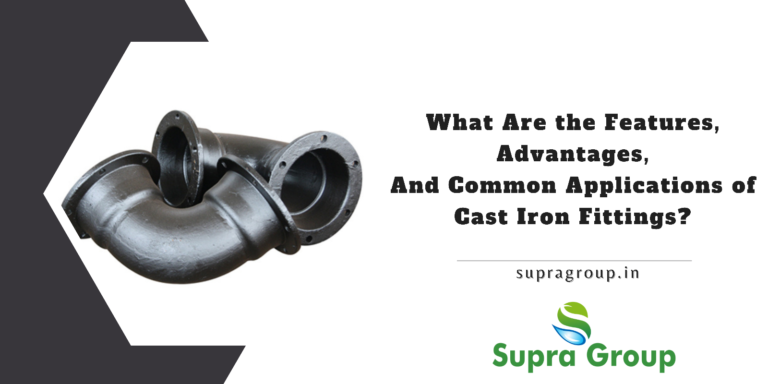
Cast iron fittings are essential components in plumbing and industrial piping systems. These fittings are made from cast iron, a durable and robust material known for its strength and longevity. Cast iron fittings are widely used in various industries, including plumbing, wastewater management, industrial processes, and HVAC systems. Let's explore the features, advantages, and common applications of cast iron fittings.
Features and Types of Cast Iron Fittings
- Construction: Cast iron fittings are made by pouring molten iron into molds to create specific shapes and sizes. This manufacturing process results in fittings with consistent dimensions and excellent strength.
- Threaded and Non-Threaded: Cast iron fittings are available in both threaded and non-threaded configurations. Threaded fittings have screw threads on the interior, allowing them to be easily connected to other pipes or fittings. Non-threaded fittings require additional connections like couplings or flanges.
- Various Shapes and Sizes: Cast iron fittings come in a wide range of shapes and sizes to accommodate different piping needs. Common types include elbows, tees, couplings, flanges, reducers, caps, and crosses. These fittings allow for smooth transitions, changes in direction, and connections between pipes of different sizes.
Advantages of Cast Iron Fittings
#1: Durability and Strength
Cast iron fittings are renowned for their exceptional strength and durability. They can handle high-pressure systems, heavy loads, and temperature variations, making them suitable for demanding industrial applications.#2: Corrosion Resistance
Cast iron fittings possess excellent resistance to corrosion, making them ideal for use in environments where pipes come into contact with corrosive substances or fluids. This resistance helps prolong the lifespan of the fittings and reduces maintenance costs.#3: Sound and Vibration Dampening
Cast iron fittings have natural sound-dampening properties, reducing noise caused by water flow or vibrations in the piping system. This feature is particularly beneficial in residential and commercial plumbing systems where noise reduction is desired.#4: Fire Resistance
Cast iron is inherently fire-resistant, providing an added layer of safety in buildings and industrial facilities. In the event of a fire, cast iron fittings can help contain the spread of flames and maintain the structural integrity of the piping system.Applications of Cast Iron Fittings
- Plumbing Systems: Cast iron fittings are commonly used in plumbing systems for residential, commercial, and industrial buildings. They are suitable for sanitary waste lines, soil stacks, vent pipes, and rainwater drainage systems.
- Wastewater Management: Cast iron fittings are highly resistant to the corrosive nature of wastewater. They are used in sewer lines, stormwater drainage systems, and wastewater treatment plants.
- HVAC Systems: Cast iron fittings are widely utilized in heating, ventilation, and air conditioning systems. They are used for ductwork, air handling units, and ventilation piping.
- Industrial Processes: Cast iron fittings find applications in various industrial processes, including chemical plants, manufacturing facilities, and refineries. They are used for transporting fluids, gases, and chemicals in a safe and efficient manner.

